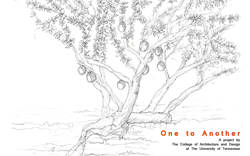Kabwet Clinic
 Sunday, February 17, 2013 at 7:57PM
Sunday, February 17, 2013 at 7:57PM The Kabwet Clinic's priority is to bring multiple modes of medical care to the Haitian population. When given the criteria of this project, our team's initial response was to design a system that would be suitable for a variety of terrain, have maximum functionality, and contain components that could eventually be replaced by local materials.
 Due to the mountainous terrain in Haiti, it was necessary for our mobile medical unit to be able to travel through very harsh terrain. Because of this, we decided to incorporate the technology of the Tweel, or a foam tire. Because this tire does not contain air, it cannot be punctured and therefore, allows it to travel through a variety of conditions.
Due to the mountainous terrain in Haiti, it was necessary for our mobile medical unit to be able to travel through very harsh terrain. Because of this, we decided to incorporate the technology of the Tweel, or a foam tire. Because this tire does not contain air, it cannot be punctured and therefore, allows it to travel through a variety of conditions.
The functionality of the Kabwet Clinic is a very important concept to the project. The clinic addresses three aspects of care which are prevention, response, and maintenance. The clinic addresses prevention through a series of graphic directions that attempts to teach the people of Haiti basic first aid care, thus preventing more serious conditions resulting from minor injury. The medical pack and tent allow the cart to transform into a mobile clinic which is efficient for response in the event of disaster or emergency. The maintenance aspect of the design is carried out through a break-away pack which gives a single person the ability to travel to areas alone and treat minor injuries and illnesses.
 Finally, one of the most important concepts of the Kabwet Clinic is its ability to transform over time. Fabricated materials, such as plastic, are not easily manufactured in Haiti and can be very expensive. It was our intent to design a modular system that allows the clinic to evolve over time by using local materials to construct the components, and thus becoming embedded into the Haitian society.
Finally, one of the most important concepts of the Kabwet Clinic is its ability to transform over time. Fabricated materials, such as plastic, are not easily manufactured in Haiti and can be very expensive. It was our intent to design a modular system that allows the clinic to evolve over time by using local materials to construct the components, and thus becoming embedded into the Haitian society.





Reader Comments (4)
The most interesting part of this project to me is the idea that the unit will transform over time to be manufactured in Haiti.
The multipurpose use and complexity of the compactness is very appealing.
I do not know the price of the wheels. Although they are a really cool find, I wonder the price effectiveness of this component. If the unit will last for many years, perhaps this could be justified.
Great graphics! The project and its information reads well! I am fascinated how the project is divided up into multiple scale units. The simple idea of using a "U-Boat" shipping cart design is innovative. But to take it further into detail utilizing the space it can provide is fantastic. I am still concerned about the ergonomics of the pack, but overall great project!
i loved the hand rendering you apllied to your computer drawings.